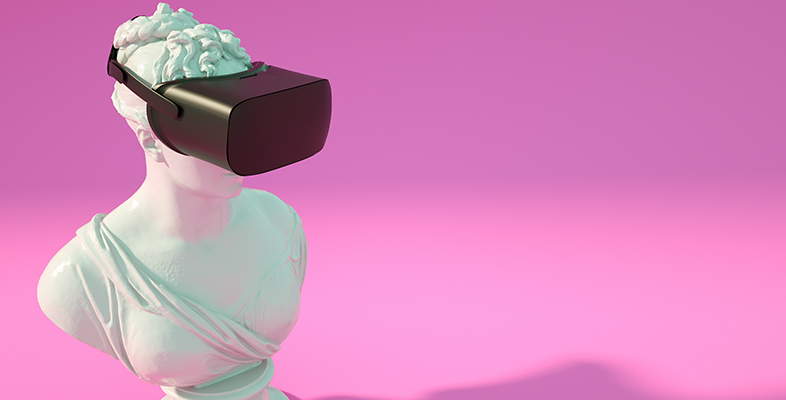3.4 Croesus on the pyre
In spite of gaining the Spartans as an ally, when Croesus launches his pre-emptive strike against the Persians, he’s the one to lose his empire. The reversal of fortune which the massively wealthy Croesus suffers culminates with that scene of him on the pyre (see Figure 12: the wine amphora.) In Herodotus we learn more about the context. After his victory, the Persian king, Cyrus, puts Croesus on the pyre, at which point Herodotus takes us through his reasoning: ‘perhaps he had in mind to dedicate Croesus as a victory-offering to some god, or he wished to fulfill a vow, or perhaps he had learned that Croesus was god-fearing and put him on the pyre to find out whether some divinity would save him from being burned alive’ (1.86.2). That third option is particularly striking, because in a poem by a Greek author called Bacchylides, who was active a generation before Herodotus, Apollo does indeed intervene to save Croesus, by sending a rainstorm to put out the fire. Indeed, it may because of its association with divine intervention that the scene of Croesus on the pyre was so attractive to the amphora painter. Herodotus, however, humanises the story. When Cyrus hears Croesus cry out ‘Solon’, and learns about his reflections on the instability of human fortune, Cyrus steps in and puts out the fire himself.
In Herodotus’ hands, the scene on the pyre takes us back to the beginning of his account of Croesus and delivers a memorable pay-off, where Croesus finally grasps the truth of Solon’s remarks: you really can’t call someone happy until the end. But this isn’t quite the end of Croesus’ story. For, once Cyrus saves him from the pyre, Croesus sends his Lydians to make one last enquiry of the oracle at Delphi, angry that the god (Apollo) had deceived him. The oracle’s answer contains lessons for the reader too.

Activity 14
Read the passage below. Then consider the following question, writing a sentence or two in your own words in answer: What two things does Croesus learn?
Herodotus 1.91.1, 3–4, 6
When the Lydians [who had been sent by Croesus] arrived and enquired of the oracle as they had been instructed, the Pythia (it is said) said this: ‘No one is able to escape their allotted fate, not even a god. Croesus has fulfilled the error of his ancestor that goes back five generations – Gyges, who, though he was a bodyguard for the Heraklidai, followed a woman’s deception to murder his master and take that man’s office, to which he had no right … Besides Apollo saved Croesus from being burned alive.
As for the oracle that occurred: Croesus has no right to cast blame. For Apollo declared to him that, should he lead an army against the Persians, he would destroy a great power. Given this response, had he wanted to plan well, he should have sent and enquired again whether the god meant his own power or Cyrus’s. Since he didn’t put together (sullambanō) what was said and he didn’t make further enquiries, he should acknowledge that he was the cause (aitia) of his own downfall.’
This was the answer of the priestess. The Lydians carried the message back to Croesus and informed him of it. When he heard it, he agreed that the error was his own, not the god’s.
Discussion
You may noted these two things that Croesus learns:
- He learns that he was in the wrong, not the god: Apollo hadn’t specified which empire would fall.
- Croesus also learns that his downfall was fated. His fate can be traced back to Gyges.
There are several significant points about this final oracular consultation that serve as a useful summary for how Herodotus can help us read historically. First, it’s again a rather strange oracle: Croesus isn’t enquiring into what will happen but rather what has happened. In this sense, this oracular consultation is about how to read the past. Through this final oracle, Herodotus spells out the lesson for Croesus and, by extension, us, the readers. The answer Croesus had received was ambiguous. He should have followed it up with further enquiries.

In addition, the oracle adds a critical idea: Croesus had been fated to come to a bad end and lose his throne, because of the actions of his ancestor. The notion of inherited guilt is another common theme in ancient Greek literature. It’s a way of explaining why people who do bad things often seem to get away with it; they may, but their descendants won’t. But note how it’s repurposed by Herodotus to get us to think about our own reading practices. Did you remember that Herodotus, at end of his account of Candaules, had mentioned an oracle that foretold that punishment would be visited on Gyges’ family in the fifth generation, adding that at the time people didn’t make anything of it – just as Croesus hadn’t initially made anything of Solon (poieō logon oudena, 1.13.2; 1.33.1)? It would be easy not to have made anything of this, given everything that has passed since. But here, right at the end of Croesus’ story, we are reminded that we should, in the end, pay attention to the details.
This is a lesson in reading. Namely, we learn about the importance of putting things together (sumballesthai in Greek), just as Croesus had failed to do so. The way Herodotus ‘displays his enquiry’ (1.1.1) invites readers to get involved in the enquiry for themselves, to put all these things together, to be alert to ambiguity and nuance, to read to the end. Understanding is not a one-off moment but a process of continual self-reflection about the positions that we take and the views we adopt. Thinking historically is to read, and write, self-critically.
